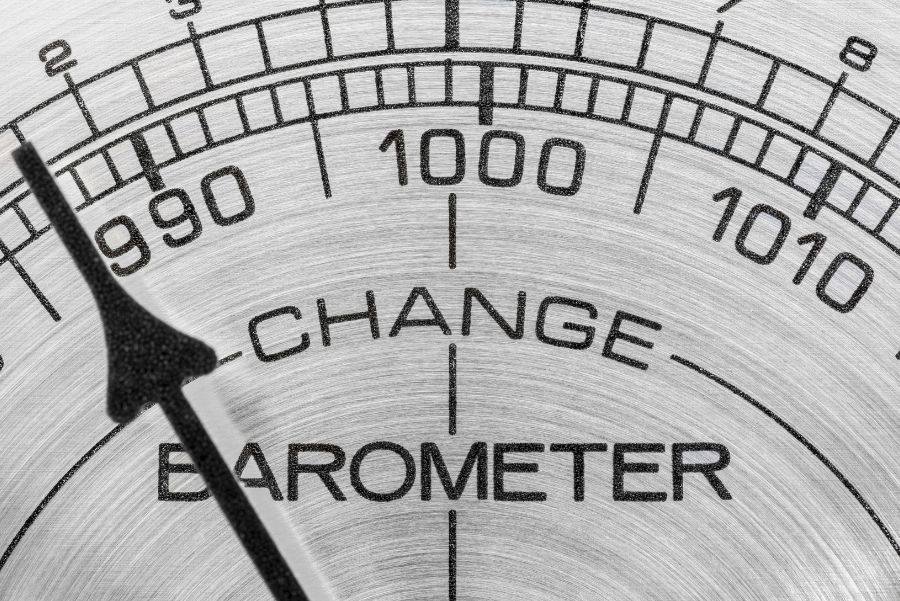A barometer is an essential tool in measuring atmospheric pressure and a vital tool for weather forecasting, plane navigation, and explorations. There are two types of traditional barometers called the Mercury or Torricellian barometer and the aneroid barometer. On the other hand, modern barometers are entirely electronic and will show pressure readings on an LCD screen display.

What is atmospheric pressure?
Atmospheric pressure is the force caused by the weight of a column of air in the atmosphere. This column of air extends to the top of the troposphere.
When people climb a tall mountain, they will get closer to the top of the troposphere, which means lower atmospheric pressure. The high altitude causes high altitude sickness. Climbers often wear portable electronic barometer to determine their elevation. Atmospheric pressure decrease by one millibar for every 8.2 metres of height gained.
Barometers were designed to be accurate and efficient. There a many factors that can affect the precise reading of atmospheric pressure.
Effects of hot and cold temperatures to Atmospheric pressure
Warm air will cause air pressure or atmospheric pressure to decrease, and this is because molecules of air collide and exert force on each other. When air is heated its molecules move faster and increase the speed of the collisions. Air molecules became less dense when heated because air molecules increase their distance from each other, creating low atmospheric pressure.
The cold temperature causes atmospheric pressure to rise. When air molecules are cooled, they move more slowly and decrease their velocity. Their molecules come closer together, making air denser in colder temperatures. Thick air creates high atmospheric pressure.
How often do you calibrate a barometer?
A barometer has many uses including measuring atmospheric pressure, weather forecasting and navigation. Most traditional barometers will last a few decades, depending on how it’s used and its location. But if barometers are moved often and are placed outside the may deteriorate much faster. Digital barometers, on the other hand, are only designed to last a few years less compared to the traditional type since they use LCD screens which have a limited lifespan of around 60,000 hours.
Barometers need to be recalibrated once in a while to ensure that the readings are accurate.
- Calibrate the barometer at least once a year, and you do this by comparing local atmospheric pressure data from weather reports with the readings from your barometer. Any manor differences mean you need to adjust your barometer and match the atmospheric pressure reading at sea level.
- Calibrate the barometer only during good weather and not when you have stormy weather. This because during storms, the atmospheric pressure is down. It won’t be easy to calibrate it at sea level, which is the standard measure.
- Calibrate the barometer especially if you’re relocating to a higher elevation. Altitude has a direct effect on atmospheric pressure. The higher the elevation, will result in lower the atmospheric pressure. A more downhill, below sea level, will result in higher atmospheric pressure. The barometer should be calibrated based on the altitude of the location to get the best atmospheric pressure reading.